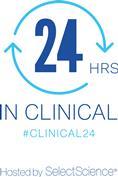More News – Page 137
-
 News
News’Dormant’ HIV produces RNA and proteins during anti-retroviral therapy
Two independent groups of researchers report that a subset of ‘dormant’ HIV-infected cells spontaneously produce HIV RNA and proteins that may impact patients’ HIV-specific immune responses.
-
 News
NewsProgramme helps fund 16 Global South healthcare hubs to combat infectious diseases
A York University-led programme is helping bolster healthcare in the Global South by providing more than $5.8 million in funding for 16 projects in as many countries.
-
 News
NewsLeading scientists issue ‘gain of function’ recommendations
A workshop of leading scientists has reviewed the benefits and risks of ’gain of function’ research, and proposed a foundation to guide discussions and improve oversight moving forward.
-
 News
NewsResearchers discover genes behind AMR in deadly superbug infections
Australian researchers have uncovered new genetic insights into Staphylococcus aureus, revealing what makes the bacterium so dangerous when it enters the blood.
-
 News
NewsProteins in breast milk found to be essential for a baby’s healthy gut
A new study shows variation in the protein composition of breast milk between mothers explains much of the variation in the abundance of key beneficial microbes in the gut of their babies.
-
 News
NewsRespiratory tract microbiome influences the severity of bacterial pneumonia
Pneumonia is an infection of the lung alveoli caused by bacteria, viruses or fungi. It is one of the leading causes of morbidity and mortality worldwide, representing a clinical and economic burden and a global public health problem. Source: CDC/ Dr. Francis Chandler Transmission electron microscopic (TEM) image ...
-
 News
NewsMore people develop sepsis than we thought — but more survive
The observed increase in cases is largely due to more people developing sepsis repeatedly, rather than dying the first time they contract it, a new study reveals.
-
 News
NewsUltrathin nanotech promises to help tackle antibiotic resistance
Researchers have invented a nano-thin superbug-slaying material that could one day be integrated into wound dressings and implants to prevent or heal bacterial infections.
-
 News
NewsSurveillance system detected infection linked to eye drops months before outbreak declared
An infectious diseases surveillance system successfully flagged cases of a drug-resistant infection spread by eye drops months before national public health officials announced an outbreak.
-
 News
NewsRapid acting oral vaccines are on the way
Researchers studying SARS-CoV-2 may have developed new methods to administer vaccines orally, which would be both easier to administer and more effective at combatting illnesses.
-
 News
NewsStudy of bacteria in day care settings reveals links with children’s lung health
Particular combinations of bacteria found in dust at day care facilities have been linked to wheezing in young children in a study presented at the European Respiratory Society International Congress in Milan, Italy.
-
 News
News‘Regular testing needed’ following massive blue green algal bloom in UK’s largest lake
Water in the UK’s largest freshwater lake needs to undergo routine testing for cyanobacteria species in the future, following a devastating bloom, scientists have warned. Parts of Lough Neagh, which supplies around 40% of Northern Ireland’s drinking water, have been mired in thick green sludge following a massive bloom over ...
-
 News
NewsTwo autopsies reveal secrets of HIV reservoirs
A research team shows for the first time that HIV reservoirs are concentrated in the spleen and lymph nodes, and that they can travel throughout the body.
-
 News
NewsTetrazolium salt tech speeds up bacterial testing in food
Scientists have developed a technology that can rapidly and accurately determine the number of viable bacteria in food products electrochemically, using tetrazolium salt (MTT), a water-soluble molecule.
-
 News
NewsClimate change can alter the risk of succumbing to infectious diseases
A new Europe-wide study has found that he prevalence of potentially pathogenic protozoans, bacteria and viruses in birds and bats is associated with temperature or rainfall.
-
 News
NewsSelf-decontaminating fabric burns out viruses but is safe for skin
A new material that packs deadly heat for viruses on its outer surface while staying cool on the reverse side could transform the way we make and use personal protective equipment (PPE).
-
 News
NewsMalaria parasites resistant to treatment and detection emerge in Ethiopia
Genomic surveillance by scientists has revealed mutations in malaria-causing parasites that will complicate efforts to eradicate the disease in Africa.
-
 News
NewsOptical device kills pathogens on surfaces
Researchers at Osaka University have created a new optical device that can be used to kill pathogens on surfaces while remaining safe for humans.
-
 News
NewsE coli bacteria engineered to generate electricity from wastewater
Scientists have reported a groundbreaking achievement in bioelectronics, advancing the capabilities of common E. coli bacteria to generate electricity.
-
 News
NewsAI method refines biome labeling for microbial community samples
Researchers have introduced Meta-Sorter, an AI-based method that leverages neural networks and transfer learning to significantly improve biome labeling for thousands of microbiome samples in the MGnify database.

